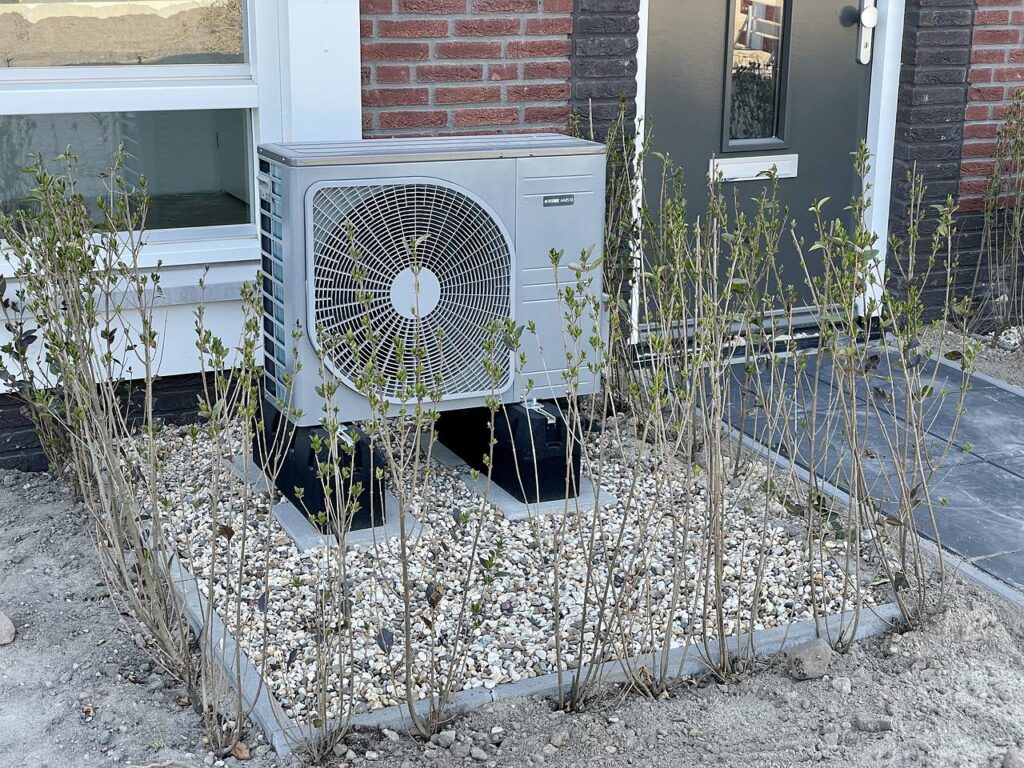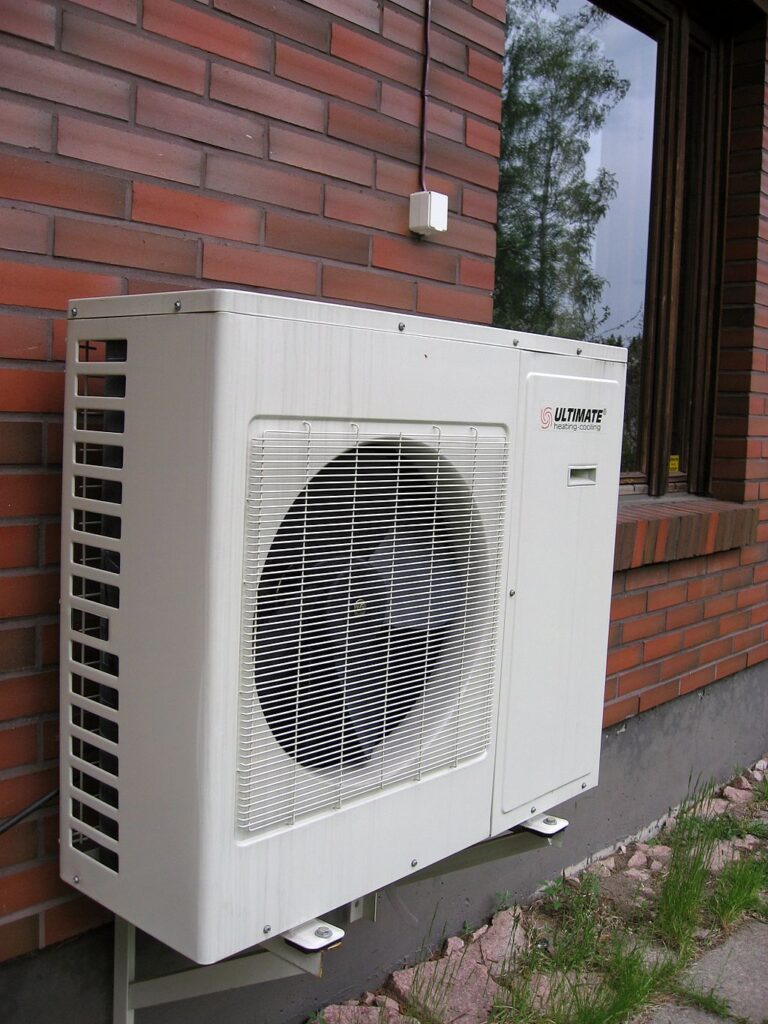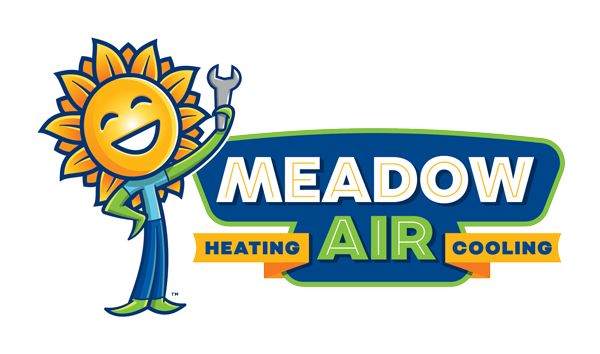What Does a Heat Pump Look Like?
When it comes to heating and cooling one’s home, probably the most commonly chosen solution is an AC unit – and while definitely convenient, it is not the only option out there. If you’re looking for an alternative to air conditioning, then you might want to consider a heat pump.
What are heat pumps? That’s what we will be talking about below. First, we will briefly describe what they are, and then talk about the different types of heat pumps out there. So, if you were wondering what heat pumps are and what does a heat pump look like, you couldn’t end up in a better place.

What Is a Heat Pump?
A heat pump is a device that heats up a house, a shop, or some other kind of building using the refrigeration cycle – it absorbs the heat from the outside and releases it into the building, keeping it warm. Many home appliances work in the same way, for example a refrigerator.
Even though the name might suggest that a heat pump only makes the place warmer, that’s often not the case – many of the recently released heat pumps work both ways, keeping your home both warm and cool.
Heat pumps have quite a long lifespan, which makes the process of deciding which one to buy even more important – it’s not something that you will change in a year or two. In fact, if you take care of it properly, meaning you fix any issues that might appear along the way and clean it regularly, among other things, a heat pump can serve you for even 15 to 20 years.
Now, let’s talk about what does a heat pump system look like. A typical heat pump usually consists of two parts – an outdoor unit and an indoor unit. The outdoor unit contains parts like the outdoor coil, compressor and a fan, while the indoor unit, also known as the air handler, consists of an indoor coil, fan and supplemental heater. The outdoor units resemble a central air conditioner.

Types of Heat Pumps
Although there are a few different types of heat pumps, the most commonly seen ones are air-source heat pumps, water-source heat pumps and ground-source heat pumps. As you might guess from the names, the difference between them is the source of heat.
Air-source heat pumps transfer heat between the outdoor and indoor air. They are usually installed in residential buildings. Water-source heat pumps absorb the heat they use to warm up your house from the water, whole ground-source heat pumps transfer the heat from the ground outside and into the air inside your home. They are also sometimes called geothermal heat pumps. They usually have higher initial costs, however, in the long run their operational costs are lower as the ground temperature typically doesn’t fluctuate much throughout the year.
Heat pumps can also be divided into ducted and ductless. Air-source, water-source and ground-source heat pumps are all ducted, as they use ductwork that is already in your house or building to distribute heat throughout the entirety of it.
Ductless heat pumps which are also often called mini-split systems, on the other hand, work in zones. They use line sets to blow the air into the indoor space, and each of the units has its own thermostat, so every person can set the temperature in the area they are currently in to how they like it. Ductless heat pumps are great to have in areas to which your regular HVAC system has trouble reaching or which you would like to keep at a lower temperature than the rest of the building.
What Does a Heat Pump Look Like
Now, let’s move to the main point of this article – What does heat pump look like? As we already mentioned, most heat pump systems look similar – the difference is in the place they are mounted. Although many might think that the only place to install a HVAC system is in the top part of the wall – but that’s not actually the case. You can also install your heat pump:
- On the ceiling – cell-mounted units are usually slightly larger when compared to normal vent ducks. If you don’t want something that will take quite a bit of space on your wall, then ceiling-mounted units are the perfect choice, as they are usually only a couple of inches.
- Above the floor – if you don’t mind your HVAC system being mounted on the wall, but don’t want it to be too high, you can always opt for ductless floor-mounted units. They are a good choice if you’re using a HVAC system instead of radiators.
- Ducted vents – if you don’t want to deal with the process of installing completely new units around your home and you already have duct vents in your home, then ducted air handlers might be the best option.
The Bottom Line
There’s no denying that an AC unit is one of the most common ways to cool and warm up one’s house. However, it isn’t the only one – another very popular choice are heat pumps. Just like air conditioners, they can both heat up and cool down a room. They are also environmentally friendly, as they don’t consume fossil fuels, which is why many people decide to go with them as a means of warming up their homes.
Most heat pumps have the same elements – the differences start when we’re talking about the sources of heat. Most common types are water-, air- and ground-source heat pumps. Heat pumps will also vary depending on where you want to install them inside your home, as you could see above.
Whether you want to install an AC unit or a heat pump, you need to involve a professional, to make sure that everything is installed as it should be and that it is working properly. At Meadow Air, we provide our clients with only the best service – whether you need to have a heat pump installed, perform an inspection or complete regular maintenance, you can be certain that it will be done with utmost care, professionalism and precision. If you’re located in Phoenix, Arizona or surrounding areas, don’t hesitate to give us a call or fill out the form on our website.
